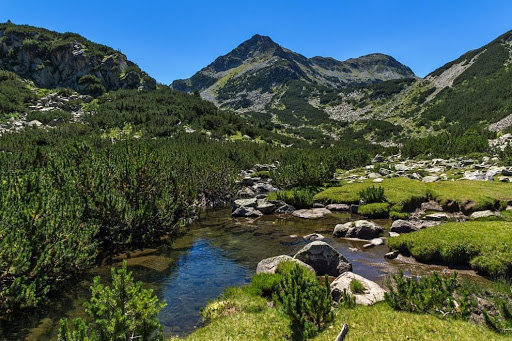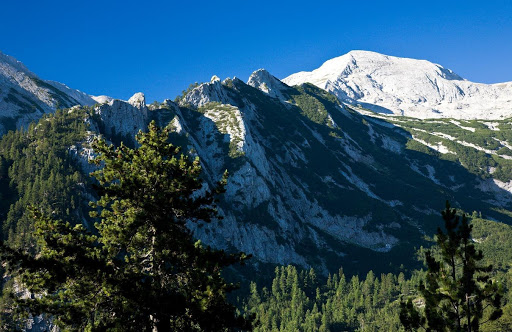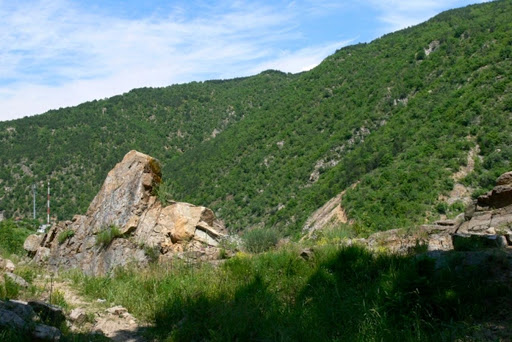Reserves in Pirin National Park
Pirin Park or Pirin National Park, as its official name is, was created in the distant 1962 with the sole purpose of preserving its biosphere diversity and preserving the natural formations that have formed on its territory.

The park is located on an area of 403.3 sq.km, which means it practically occupies almost the entire territory of Pirin Mountain. It is bordered by the municipalities of:
- Bansko
- Kresna
- Sandanski
- Gotse Delchev
- Razlog, Simitli and Strumyani
- Within its borders are located six park regions in total and three reserves: „Bayuvi dupki – Dzhindzhiritsa”, „Ulen” and „Tisata”.
Reserves in Pirin National Park
„Bayuvi dupki – Dzhindzhiritsa”
This is not only the oldest reserve built on the territory of Pirin Park but is one of the first reserves created in our country in general. The reserve was created and declared as such in 1934, and in the very beginning it covered only few independent and smaller reserves. In 1979 to these areas were included new ones, and today the reserve „Bayuvi dupki – Dzhindzhiritsa” is located on 2873 hectares in total.
Due to its significant biosphere diversity, the reserve was included in the list of protected territories of UNESCO in 1977.
Where is the reserve?
The „Bayuvi dupki – Dzhindzhiritsa” Reserve is located in the northeastern part of the beautiful Pirin massif. It starts from the Main ridge, including the cirques Razlozhki Suhodol, Bayuvi dupki, Okadenski and Kamenitsa. To the east it starts from Koteshki ridge, passes through the lateral ridge of Pleshki peak and ends under Pirin peak. The lowest point of the reserve is at an altitude of 1490 meters and the highest point is at an altitude of 2884 meters.
What is the unique thing about the reserve?
Extremely rare tree species grow in the protected area. In the lowest part of the reserve, for example, grow mostly massifs of white and black pine, hazelbush and beech. A little higher up, in the middle parts, you can see pine spruce and spruce forests, and in the highest parts are situated massifs of black and white fir. This is the only reserve on the territory of which grow some of the oldest black pine trees, the most popular of which is the Baikushev‘s pine, which is 1300 years old.
„Bayuvi dupki – Dzhindzhiritsa” protecs both black and white fir trees that are centuries-old. On the territory of the reserve can be seen individual white fir trees, as the age of some of them is over 1000 years.
Apart from the centuries-old precious forest massifs, the territory of the reserve also preserves more than 42 regional and 16 Pirin endemic species. Here you can see endemic species such as Pirin lovage, Agrostis tenius, Euphrasia, Pirin Papaver, Aquilegia aurea, Gentiana lutea, Crocus vernus, Alpine papaver, white and red carnation, Myosotis Sylvatica, edelweiss and so on.
The oldest of the reserves in Pirin National Park is home to a wide variety of animal species such as bears, wild goats, deer, marten, wild cats, squirrels and martes martes. From the feathered animal species in the reserve you can see rock eagles, Egyptian vultures, capercaillie, Gyps fulvus, hawks, woodpeckers, Monticola saxatilis, Prunella colaris, Tichodroma muraria and others.

How to visit the „Bayuvi dupki – Dzhindzhiritsa”Reserve?
In order to preserve animal and plant diversity, no human activity is permitted in the Reserve. If you wish to visit it, you can do so by booking your trip with the management of the park and hiring a guide to accompany you.
International route E4 passes through the reserve, as well as several tourist routes to the „Predel”hut, „Yavorov”hut and „Vihren”hut.
The closest settlements from which you can get to „Bayuvi dupki – Dzhindzhiritsa” reserve are the Pirin towns of Bansko and Razlog.
„Ulen”Reserve
„Ulen” is the youngest of all three reserves in Pirin Park. It was created in 1994 and occupies an area of 3156.2 hectares. The reserve was created with the main purpose of preserving and protecting the valuable forest and plant ecosystems, as well as the diversity of animal speies, inhabiting its territory.
Which territories are covered by „Ulen”reserve?
The biosphere reserve is located to the north of Haidushka polyana, to the east of Disilitsa peak and Bezbog peak, to the west of Demyanitsa River, and to the south of Banski Lakes, Samodivska porta and Tiyantsite area.
Several beautiful lake groups are located on the territory of „Ulen”reserve – Vasilashki, Disilishki, Tipitski, Polezhanski and Strazhishki, as well as several separate, single lakes, which give the beggining to several small rivers, some of which pass through its territory.
What can be seen in the region of „Ulen”reserve?
The „Ulen”reserve is extremely valuable for preserving the white fir, spruce, dwarf pine, white pine and pine spruce forests, which grow on its territory. Besides these tree species, more than 700 higher plant species grow on its territory, as nearly 50 of them are included in the Red Book of our country. Here you can see unique plant species such as black crowberry, anemone narcissflora, sibbaldia procumbens, trollius europaeus, Aquilegia aurea, enterobius vermicularis, anthonomus,and others.
Among the most interesting representatives of the mammals that inhibit the lands of the reserve are wild goat, bear, deer, wolf and so on. The animal diversity is enriched also by the various bird species, and the most remarkable representatives of the bird kingdom nesting in the reserve are the alectoris graeca, nucifraga caryocatactes, tetrao urogallus, parus caeruleus, woodpecker, etc.
The lakes in the reserve are full of Balkan trout, and on the paths you can see vipera berus lying on the Sun.
The territory of „Ulen” includes also an ancient Roman fortress. The remains of the ancient fortress are located about 12 kilometers away from the resort town of Bansko and is one of the most popular places for short one-day tours for the guests of the town.
If you wish to see the „Ulen”reserve, you can do so if you hire a guide from the closest to the reserve towns of Bansko and Dobrinishte.
As in the other natural reserves, here is also a ban on doing anything, except for guarding purposes, so you should be very careful and do not deviate from the defined tourist routes.
„Tisata”reserve
„Tisata” was declared a reserve in 1949, and was originally called „Tisova barchina”. The reserve aims at preserving the largest deposit of juniper tree in the country, as well as at preserving the huge ornithological diversity that inhabits the region.
The special thing about this reserve in Pirin National Park is that it is made of two sectors, which are divided conditionally by the Struma River. In addition, „Tisata” is the only reserve in Pirin, which has a distinct buffer zone.
Where is situated the „Tisata”reserve?
The territory that is covered by the reserve is located in the southern parts of the Kresna gorge. The altitude of the “Tisata” reserve varies from 300 to 700 meters.
Over the years, the area and territory occupied by the reserve have changed quite often, until finally, in 1991, a permanent boundary was set, and nowadays „Tisata” has an area of 574.5 hectares, including additional 420 hectares of buffer zone.
The reserve has an international nature conservation status within „NATURA 2000” due to the abundant biodiversity that is preserved on its lands.
What can be seen in the „Tisata”reserve?
Apart from the largest massifs of juniper tree, which are the biggest massifs not only in our country but also in Europe, in the protected territory you can also see Carpinus orientalis, Quercus pubescens, Terebinth, red juniper, etc., as well as a variety of herbaceous Mediterranean plants such as southern tulip, Anemone pavonina, Colchicum bivonae and others.
More than 460 higher plant species also grow in the zone of the biosphere reserve, a large number of which are in danger of extinction and they are protected. (Such are, for example, the massifs of common yew that are listed in the Red Book as endangered tree species).
On the territory of the buffer zone in the reserve there is also a huge variety of birds nesting here. This is also the home of over 109 bird species, including Monticola solitarius, Monticola saxatilis, Orpheus Sylvia cantillans, Oenanthe hispanica, Alectoris graeca, Hippolais olivetorum, Emberiza melanocephala,, Lanius nubicus, Sylvia atricapilla, Sitta neumayer, Circaetus gallicus, owl and others.
Due to the huge number of bird species, in 1997, „Tisata”reserve and its buffer zone were declared an important ornithological area.

Besides the huge number of bird species, 11 of 16 snake species that live in Bulgaria can be seen in the reserve. Within the boundaries of „Tisata” can also be seen Telescopus fallax, Platyceps najadum, Elaphe quatuorlineata, Zamenis situla, Typhlops vermiculris as well as several types of turtles, including Testudo hermanni and Testudo graeca.
From the mammals in the area of the reserve can be seen wild goats, wolves, deer, bear and others.
If you want to visit the reserve, the closes town from which you can start your walk is Kresna.
But do not forget that in all three reserves of Pirin National Park are in force strict rules. Access to the „Tisata”reserve is possible, but limited, any human activity is prohibited.
To visit the protected territory you have to book your tour with the Directorate of Pirin National Park, and its head office is located in the town of Bansko.
You will need a guide when visiting all three reserves, which are located on the territory of Pirin National Park, as he will accompany you during your entire stay in the protected territories. You can also visit the reserves on your own, but you must follow the defined path (as we mentioned above) and in no case deviate from the designated forest paths.